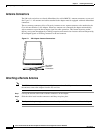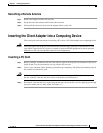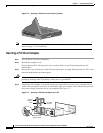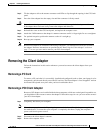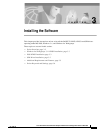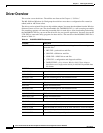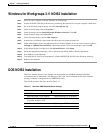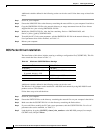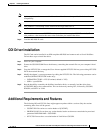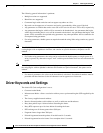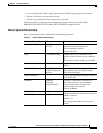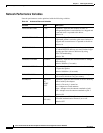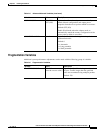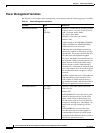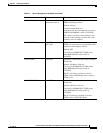
3-4
Cisco Aironet Wireless LAN Client Adapters Installation and Configuration Guide for MS-DOS
OL-1744-02
Chapter 3 Installing the Software
DOS NDIS2 Installation
Additional variables defined in the following section can also be used. Follow these steps to install the
driver.
Step 1 Power on your computer.
Step 2 Extract the NDIS.EXE files to the directory containing the network files on your computer’s hard drive.
Step 3 Copy the PROTOCOL.INI file to the network directory or merge statements from the Cisco Aironet
supplied file into your existing PROTOCOL.INI file.
Step 4 Modify the CONFIG.SYS file. After the line containing: Device = PROTMAN.DOS, add
Device = [drive:] [path] CSCNDIS2.DOS.
Step 5 To modify the PC Card system parameters, edit the PROTOCOL.INI file in the network directory. For a
list of parameters that can be modified, see Table 3-2.
Step 6 Reboot your computer.
DOS Packet Driver Installation
The installation of this driver includes creating or editing a configuration file (CSCPKT.INI). This file
must contain the lines shown in Table 3-3.
Additional variables defined in the following section can also be used.
The Wireless LAN Adapter can be installed in a MS-DOS environment by using MS-DOS IP stack
products such as FTP software.
Follow these steps to install the driver.
Step 1 Power on your computer.
Step 2 Extract the PKT.EXE files to the directory containing the network files on your computer’s hard drive.
Step 3 Make sure that the CSCPKT.INI file is in the directory containing the Packet driver.
Step 4 If you would like to modify the PC Card system parameters, edit the CSCPKT.INI file. For a list of
parameters that can be modified, see Table 3.3.
Step 5 Load the driver by typing CSCPKT [-cinuw] <int_number> at the MS-DOS prompt (for example,
CSCPKT 0x65) and press Enter.
Table 3-3 Minimum CSCPKT.INI Driver Settings
Infrastructure Mode Ad Hoc Mode
[CSCPKT] [CSCPKT]
INFRASTRUCTURE = YES
If omitted, default is YES
INFRASTRUCTURE = NO
SSID = <your SSID> SSID = <your SSID>
CHANNEL = <channel>



